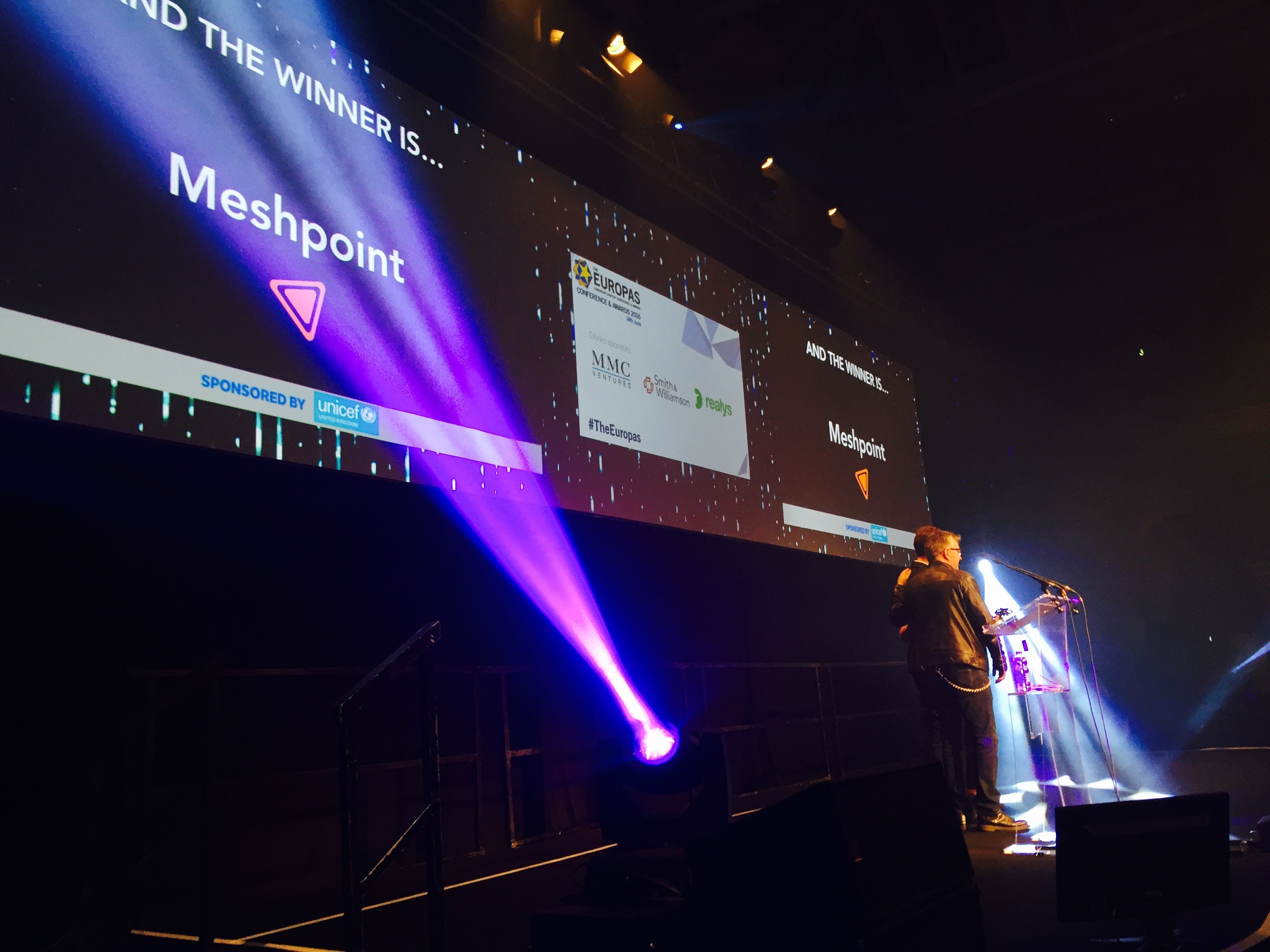IoVuT - Internet of very useful Things
In London at Europas conference we received award for best humanitarian innovation, this was a huge things for us, because this award was given to us directly by Unicef.


Just few days after the conference ended we've recieved a call from Unicef to establish an IoT network in Zaatari, Jordan, one of the biggest Refugee camps, with population of over 80,000 people. mostly Syrian civil war refugees.
Zaatari camp was opened in 2012, at the beginning of Syrian War. Since the beginning, the humanitarian organizations have been struggling to keep up with growing demands of the camp's inhabitants.
Uber for waste (IoT for good bad things?!?)
On the call Unicef team from Jordan and Lebanon explained why they needed our help and why they gave us this award. We got this award because they said the bigges issue they face in the field today is setting up communication, and then recognised MeshPoint as an great solution to this problem.
But project they wanted our immediate help actually had nothing to do with providing Internet, but with something completely else - human waste.
One of the biggest issues currently in most refugee camps is managing septic tanks, and emptying them in time. Because if this is not taken care in proper time then with overflowing sewage diseases spread, and most often first to be affected are the most vulnerable - small children.
Right now, we can help, by providing a backbone for a network of IoT sensors that would collect levels from clean and dirty water tanks. First step will likely be installation of water level sensors in water reservoirs and waste disposal tanks. The sensors will be connected via Meshpoint network to a server with an SMS gateway, alerting the companies responsible for the logistics when the water or waste reach determined levels, speeding up the process of delivery, cleanup, and cutting down costs and preventing hygiene catastrophes. The volunteers are already calling it 'Uber for waste'.
Clean water and waste level sensors + MeshPoint = much less diseases.
While we negotiate our involvement in this project, we're always looking forward to cooperate on similar projects in the future.
Future plans
In our IoT networks we predominately use ESP8266 chip as a basis for our sensors. It's a really powerful chip with integrated WiFi and a very economic sleep mode, that can last over three weeks on only one (used) Li-Ion battery, provided it 'wakes up' every five minutes. (We recycle batteries from old laptops and similar devices).
When ESP wakes up, it searches for WiFi, connects and sends data to a server and shuts down. We have measured the time it needs to do all this tasks to 7 seconds. The ESP asks for DHCP from the router, and a few more messages are exchanged, which is time consuming. Some time may be saved by implementing a static IP address. We'll starting our measuring experiments soon. We expect with 4 cells to get over a year of completely autonomous sensor collection. Here is how our battery measurements are tracked:

In our DB servers, we have implemented triggers that send out an alert roughly one day before the battery is totally depleted and damage can be done to it, so we're always able to change it before the critical moment.
On our roadmap are also air quality sensor stations, which can be put in forests, and in combination with Meshpoint can act as a early detection mechanism for forest fires and also a climate monitor and analyzer tool
Discussions
Become a Hackaday.io Member
Create an account to leave a comment. Already have an account? Log In.